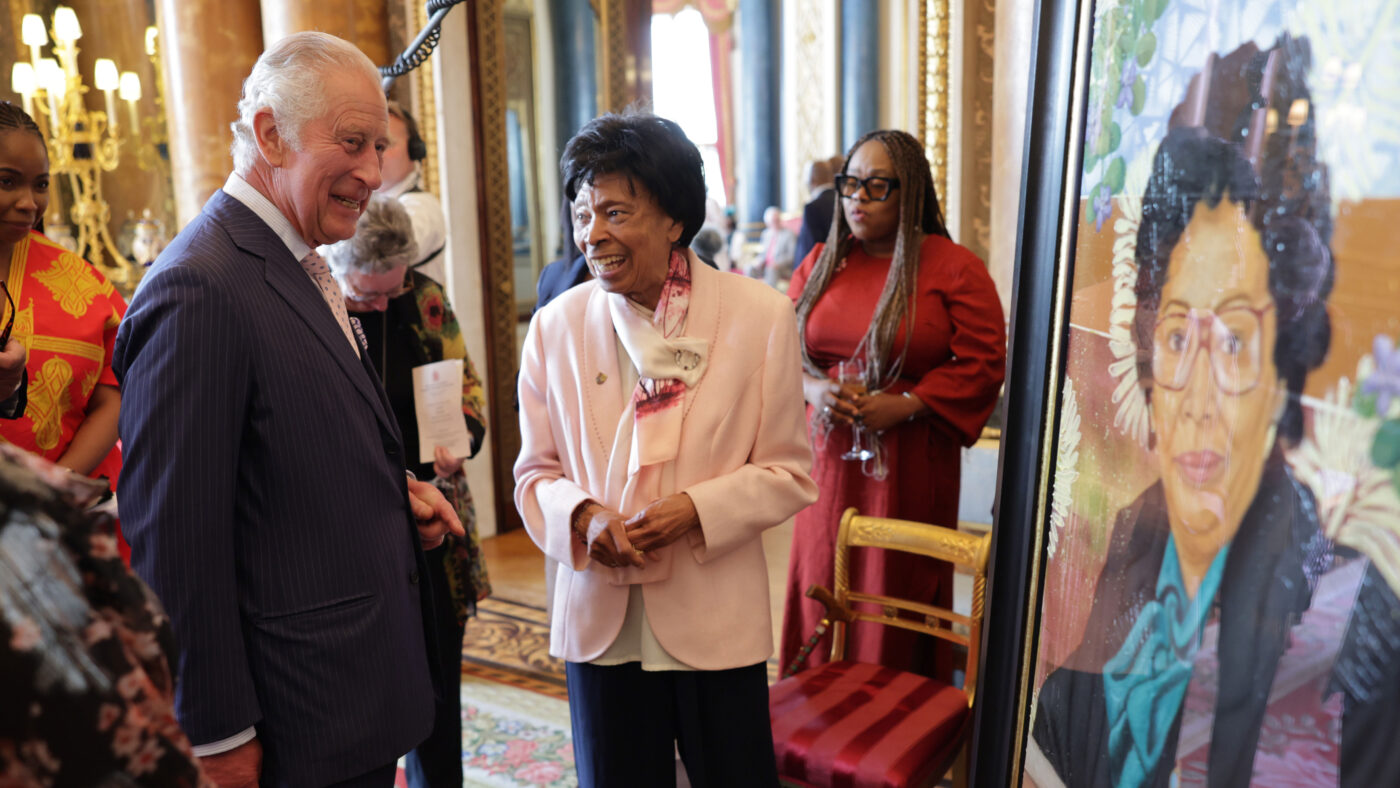The 75th anniversary of the Windrush docking at Tilbury was marked yesterday with more status and recognition than ever before. There were community-led events in town halls, hospitals, schools and workplaces, a national faith service at Southwark cathedral, and the King unveiled portraits of Windrush elders that he has commissioned for the royal collection.
The profile of the anniversary is increasing understanding of the history of the making of modern Britain through the post-war Commonwealth migration which began with Windrush. After the anniversary celebrations for Windrush Day itself, this anniversary year now offers a chance to reflect not just on the progress that Britain has made on race, but now on what still needs to change.
A recent British Future study found that 80% of ethnic minorities feel that the UK is the best place to live as someone from a minority background. Yet 8 in 10 also feel that more progress is needed, with two-thirds saying Black and Asian people face daily discrimination.
The story of post-Windrush Britain could be seen as a tale three-quarters told: an unfinished story in three parts, with the conclusion yet to come.
After 1948, the first quarter of a century was the contested story of arrival. Those who came to this country had a strong sense of their own Britishness, having been taught more about the ‘mother country’ at school than the land of their birth. Yet they found that very few of their new neighbours felt the same sense of shared identity upon arrival in Britain. The Windrush generation had next to no public voice as fierce arguments raged in politics or the media about their very presence in the country.
After 1973, the next quarter-century saw a breakthrough for recognition. Commonwealth free movement may have ended, but the first British-born generation had put down roots. There were many firsts, with the first Black and Asian voices in Parliament after 1987, alongside breakthroughs in sport, the law, media and many other fields.
After 1998, the last quarter century has been a period of challenge and contestation. From the Macpherson Report of 1999 to the Windrush scandal and the anti-racism protests of 2020, the demand is not just for some presence in the room. It is, rather, for institutions to recognise the scale of change needed to deliver on the promise of fairness and equal treatment in practice. There has been social progress too, most notably in educational outcomes, yet that has also seen expectations rise faster still, particularly across the generations.
Can those expectations be met? That depends on what happens next. What story will Britain want to tell ourselves at the end of the first century of post-Windrush Britain? How can we put in place the foundations needed to make a decisive difference in this generation on race equality by the time of the Windrush centenary?
We are now used to thinking about ‘net zero’ on climate change. The 2050 targets set an animating mission that is constructive, action-orientated and allows each strand of policy-making to see its effort as part of a larger mission. So we should now adopt the Windrush centenary year – 2048 – as a lodestar year for race equality in Britain, to set the vision and ambition and provide a framework for how to get there.
The goal for that Windrush centenary year could be articulated as a ‘net zero’ year for race discrimination and disadvantage in British society. By then it is achievable to have evidence of fair chances and the breaking down of unfair barriers, so that race and ethnicity are not systemic factors in opportunities and outcomes in key spheres of society. It may never be possible to eliminate every individual example or experience of prejudice, discrimination or unfairness; but the challenge of this generation should be to reduce, minimise or eliminate the extent to which race and ethnicity are associated with systemic bias, disadvantage or unequal opportunities.
Take one of the clearest and most compelling examples of structural unfairness in British society: the evidence that having an ‘ethnic-sounding’ first name or surname still significantly affects how many interviews you will get when you apply for a job. Just about everybody agrees that must change. The ‘net zero’ goal could offer a way to challenge all sectors to step up, to track their efforts to monitor and eliminate this problem.
There should be a challenge to political leaders to ensure that they go into a general election year in 2024 with a constructive vision and set out competing agendas for change. This could give a framework for the current government to ensure its Inclusive Britain strategy is sustained and ambitious, and form a natural part of Keir Starmer’s ‘mission-driven’ agenda for a Labour government. It could also require efforts from both sides to ensure that our political debates, in which the discourse of race equality can be sharply contested, do not crowd out effective plans for action.
The central challenge for public policy is how the next government could provide a framework to track sustained progress on equal opportunities. The UK is a world leader in the quality and depth of ethnicity data: a ‘net zero’ goal could now provide a purpose and a focus for institutionalising future race audits and acting on their findings, to ensure significant progress towards this goal.
Britain can already make a convincing case for being the world’s most successful multi-ethnic democracy: the next quarter-century offers a chance to further strengthen this claim if we can set our sights on how to complete that journey towards fairness and inclusion.
Click here to subscribe to our daily briefing – the best pieces from CapX and across the web.
CapX depends on the generosity of its readers. If you value what we do, please consider making a donation.


